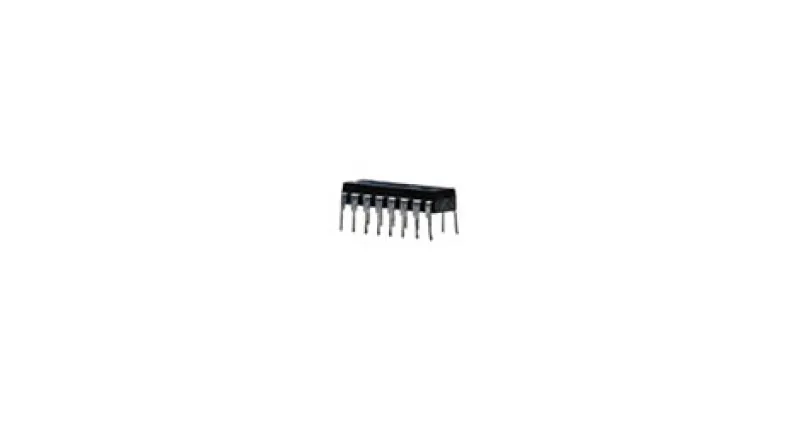This summer a presumptive blockbuster, Terminator Genisys, hit theaters — and fizzled. But at least one thing about that film was worth a second look. Its cyborgs are made of infinitesimal particles with their own bizarre ability to manipulate matter — you can shoot them full of bullets, and they reconstruct themselves before your eyes, with a shimmer of silver meant to represent the particles’ almost magical powers. What the movie calls mimetic polyalloy doesn’t exist, but its vision of a world in which the tiniest bits of matter reshape how we live and who we are is achievable, even close at hand.
IBM recently announced that it had successfully manufactured a 7-nanometer computer chip — an enormous breakthrough for computer scientists and investors interested in anything tech. All the biggest innovations in technology depend on small size, especially the tininess of semiconductor integrated circuits, or computer chips. The smaller a chip is, the faster it is, the less power it requires and the less expensive it is to make at scale. Our lives as we know them would simply not be possible without these almost unspeakably minuscule chips and the computers into which they can be assembled: Cell phones, tablets, wearables and smart devices have all been made feasible by rapid advances in semiconductor manufacturing as described by Moore’s Law, which predicts that computing power should double every eighteen months.
The standard chip size in a personal computer is currently 22 nanometers, or 22 billionths of a meter, or 2.2 millionths of the thickness of a sheet of paper. Smaller chips, 14 nanometers in size, are already in the hands — or in the devices in the hands — of consumers, primarily in laptops and smartphones, and the drive to make them even tinier hasn’t decreased an iota despite a certain recent lack of results. Intel Corp., the largest chip manufacturer in the world, has announced development on 10-nanometer chips, though the company has not yet produced a working demonstration. But IBM’s recent achievement — chips half the size of the latest and greatest on the market — not only put Intel in the shade, it reenergized the idea that chips can get smaller, pointing the way toward computing power perhaps five times greater than what we’ve yet known. And all this at a moment when innovation seemed to have stalled, disobeying Moore’s Law.
More quietly, IBM has also predicted that by 2020 it will manufacture chips for commercial use in which carbon nanotubes will replace silicon entirely. The silicon for which the famous valley was named has been the primary stuff of semiconductors for decades. But carbon nanotubes — structures of atoms about 1.4 nanometers in size — can be used as transistors; like silicon, they are able to manipulate electric currents, turning them on and off to create information encoded as zeros and ones. A team of Stanford electrical engineers has built circuits in which carbon nanotubes are stacked on top of a silicon semiconductor, indicating that we might see chips made of both materials. Whether you look to private industry or to the academy (and the two are never separate in tech), chips of 5 nanometers and smaller seem within reach.
There are obstacles. Manufacturing tiny chips already requires special clean conditions, since they’re printed using light. But to print the tiniest of tiny chips, IBM employed a method called extreme ultraviolet (EUV) lithography that’s so delicate most labs can’t replicate it: Not just motes of dust or jostling but ambient vibrations in a building’s foundations can interrupt the printing process. But this too is an opportunity. Savvy investors might look for those chip manufacturers in the U.S. as well as overseas that are ready and willing to construct superstable fabrication facilities or that seem to be investing heavily in research and development or partnerships related to EUV. At the moment, the world’s single largest producer of photolithography supplies is ASML Holding, which is working to bring EUV tech to the market; competitors include Applied Materials and Taiwan Semiconductor Manufacturing Co.
And in the meantime, IBM may have reintroduced itself as a major competitor in semiconductor design. Intel still owns chip production, from design to fabrication, and it would be unwise to say that it will topple anytime soon. Nor does IBM fabricate chips itself, having sold its microelectronics facilities to GlobalFoundries, a global corporation owned by the Abu Dhabi government. Advanced Micro Devices — Intel’s only real competitor at the moment — and GlobalFoundries have been working together since 2009; AMD took a piece of the IBM sell-off. When 7-nanometer chips are finally licensed for the marketplace, AMD and GlobalFoundries are first in line for the rights to build them.
The truly futuristic perspective on nanotechnology includes many things we’ve seen in the movies. Some of these have seemed so impossible as to appear only as magic: invisibility cloaks, for instance, which may be attainable using semiconducting thread made of nanoparticles, flexible screens and nanocomputers so fast they can understand and display hyperrealistic dynamic camouflage in real time. (We’ve already got nano sheets that replicate the mirage effect, displacing heat and light to trick the brain into thinking an object has disappeared.) Nanotech is coming, whether or not the Terminator — or IBM — will be back.
Get more in technology.






